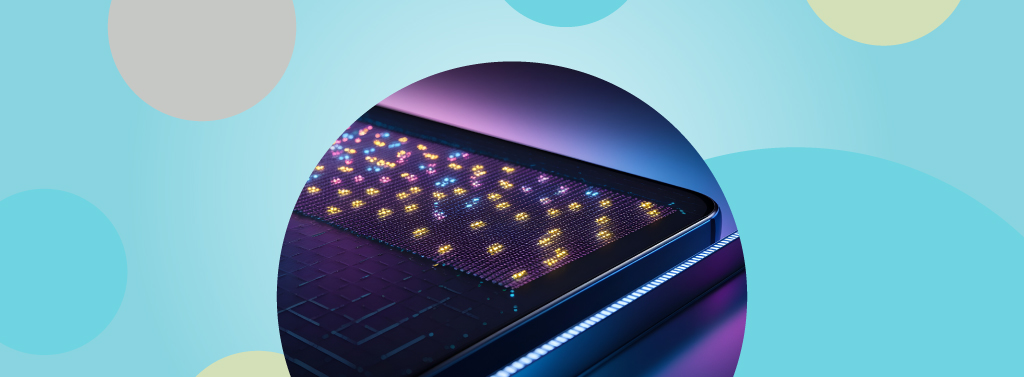-

MicroLED Integration for Wearable Devices: Enabling New Form Factors and Applications
Over the last decade, the market for wearable technology with microLED integration has grown tremendously. According to Fortune Business Insights, the market is expanding at a CAGR of 34.6%, from $120.15 billion in 2023 to $1,695.46 billion by 2032. The rising demand for fitness trackers, smartwatches, AR applications, sleep monitoring, and stress tracking drives this…
-

The Economics of MicroLED Substrates: Cost-Effective Solutions for Display Manufacturers
The microLED substrate is the foundational layer that directly impacts the quality, scalability, and cost of microLED displays—critical factors for manufacturers aiming for a wider market reach. For example, NSC Innovation uses an advanced 200mm GaN-on-silicon solution for AR and VR displays. They monolithically integrated silicon CMOS with GaN LEDs at full wafer scale, enabling…
-

The Role of Automation in MicroLED Assembly: More Efficiency and Yield
The small size of the LEDs necessitates exact positioning to eliminate faults, making the microLED assembly process difficult. Accurately moving millions of these LEDs presents technological challenges. However, automation can boost productivity and cut expenses. For example, robotic arms, precision alignment, and AI-driven inspection aid in streamlining the microLED assembly process, assuring uniform LED placement…
-

Future of Smartphone Displays: How GaN MicroLED is Changing the Game
The first significant microLED breakthrough occurred in 2000 when researchers at Kansas State University created a blue monochrome microLED display. A decade later, the same team, now at Texas Tech, developed the first blue and green microLED display with 640 x 480 resolution using indium gallium nitride (InGaN) and gallium nitride (GaN), achieving energy efficiency…
-

Cost Optimization Strategies in MicroLED Production
MicroLED technology promises good display quality, yet high production costs still need to be improved. Recent developments indicate the possibility of considerable cost savings, with particular strategies reducing spending by as much as 30%. For example, improvements in mass transfer yield can reduce costs, while automated assembly lines and advanced lithography techniques, such as nanoimprint…
-

MicroLED Companies: A Comparative Study of Leading Asian and Western Players
Display technology is at the cusp of change as the tides gradually turn in favor of microLEDs. The pursuit of better resolution, energy efficiency, and improved color reproduction has encouraged innovation, research, and development (R&D) activities, as well as strategic alliances between microLED companies. As a result, the tide is gradually turning in favor of…
-

Next-Gen Wearables: MicroLED Integration in Flexible Displays
From the rudimentary eyeglasses perched on the noses of 13th-century Italian monks to the sleek smartwatches and fitness trackers gracing our wrists today, wearable technology has undergone a remarkable evolution—the microLED integration is taking this to the next stage. By 2026, the size of the global wearable technology market is expected to reach USD 265.4…
-

MicroLED Roadmap: Exploring Today’s Progress and Tomorrow’s Potential
The microLED roadmap presents an overview and future outlook of this emerging technology, including its notable developments, challenges, and potential applications across various industries. One such key milestone in the advancement of microLED technology was recently showcased at Display Week 2024, where VueReal introduced its MicroSolid Printing™ platform. This innovative solution addresses one of the…
-

MicroLED Displays and Their Market Potential: Future Outlook
The display market, primarily dominated by conventional technologies such as LCDs and direct-view LEDs, is changing rapidly—as newer innovations enter the fray. At present, microLED displays are the torchbearers of innovation in the display technology sector, offering better energy efficiency, lower latency, higher brightness, superior color accuracy, and a long lifespan. These benefits make microLEDs…
-

MicroLED Characterization for Lighting Applications: Meeting Energy Efficiency Standards
MicroLED characterization techniques enable the identification of defects and inconsistencies in the microLEDs, ensuring that only high-quality components are used in final products. This is particularly important given the high costs associated with microLED production. For this, continuous research is essential for driving future innovations. As per a study conducted by Pandey et al. in…